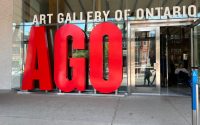Australian Government Will Conduct Joint Investigation into Authenticity of Works by Major Indigenous Art Collective
The Australian government will conduct a joint investigation into the authenticity of works produced by a major Indigenous art collective after claims of alterations and artistic interference by white art assistants, the Sydney Morning Herald reported Tuesday.
The federal, South Australian, and Northern Territory governments are behind the inquiry into authenticity of works by the APY Art Center Collective (APYACC), which have become increasingly valuable and collected by major museums across the country. The National Gallery of Australia (NGA) in Canberra was set to show 28 paintings from the APYACC in early June, but has postponed the exhibition Ngura Pulka – Epic Country following an independent review announced on April 10.
The government joint investigation and the museum’s review was prompted by a report from The Australian in early April alleging that white studio staff had been painting on the works attributed to residents of Anangu Pitjantjatjara Yankunytjatjara (APY), sparsely populated lands in remote South Australia home to more than 20 Aboriginal communities. The newspaper’s findings were the result of interviews with former gallery staff and Aboriginal artists about whether the work of white art assistants interfered with the artistic process.
South Australia arts minister Andrea Michaels confirmed to ARTnews in a written statement that she had met with federal arts minister Tony Burke and Northern Territory arts minister Chanston Paech on May 15 in response to the allegations published by The Australian.
“We determined there will be a review into the organisation led by the South Australian Government, jointly funded by the Commonwealth, with the support of the Northern Territory Government. We will work closely with the Anangu people including those working in the Adelaide Studio as the review gets underway,” she said.
“All three governments are determined to protect the integrity of First Nations art. We are committed to supporting First Nations artists to share their art with the world, and ensuring respect for their culture and stories is incredibly important.”
The newspaper investigation, independent review, and government inquiry have all brought additional attention to notions of authenticity and attribution in the art industry. Employing junior assistants in the production of artworks usually attributed to a single author is not uncommon among famous names like Jeff Koons, Tom Sachs, Kent Monkman, Kehinde Wiley, and Damien Hirst.
The issue is whether the APYACC’s white art assistants influenced or took over creative control of Aboriginal artworks attributed to APY artists in the Ngura Pulka exhibition that also had religious or cultural significance.
On Friday, Minister Burke further emphasized that concern regarding authenticity and artistic integrity was not about the APYACC’s mere utilization of non-Indigenous assistants.
“I won’t be telling First Nations artists whether or not they are allowed to be assisted,” he told the Sydney Morning Herald. “I won’t be doing that, and I won’t be telling any creators what they can and can’t create. That’s certainly not my job, that’s certainly not my style.
“What matters is to make sure that people have creative control,” he added. “And to the extent that there are allegations that there was no creative control, then that’s important for us to be able to work through the facts on that.
“But I certainly have no intention of implying a standard set of rules around First Nations artists that are not applied to any other artists in the world or throughout history.”
The South Australian government is the principal funder of the APYACC. According to the Sydney Morning Herald, the government inquiry hasn’t set a timeframe for its joint investigation. The NGA said it expects to receive results from its independent review by the end of May.



